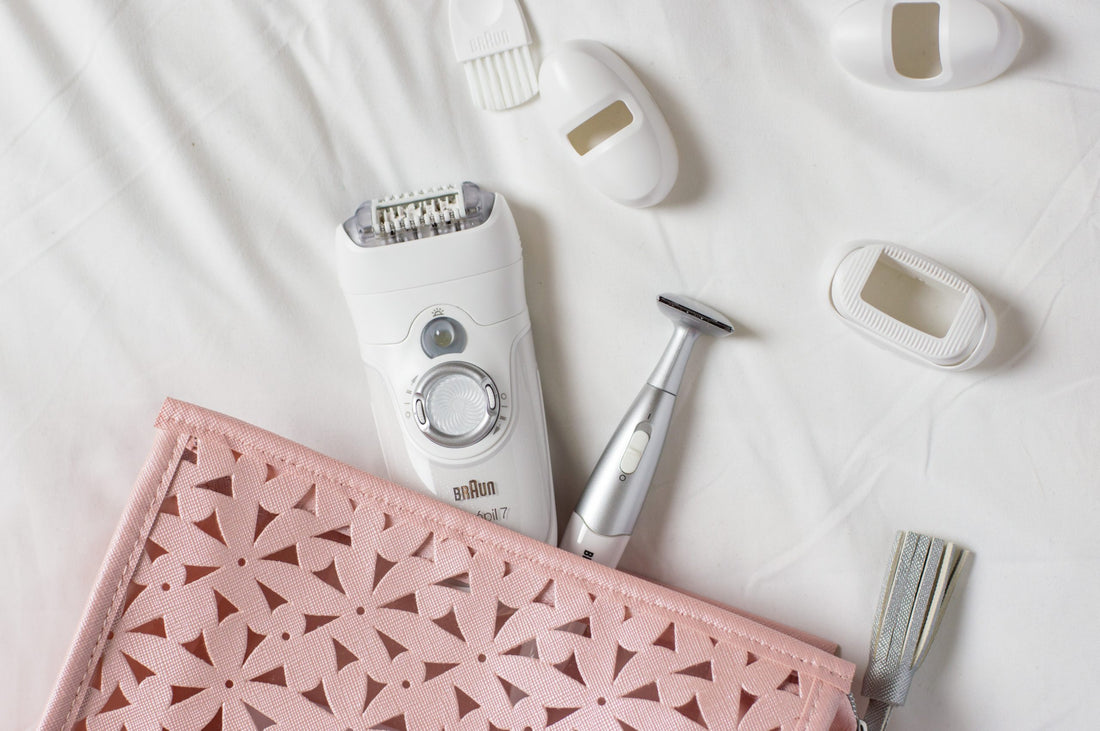When it comes to the wide variety of hair removal methods, there are two main ways estheticians and other skin experts categorize them. Epilation refers to removing hair from the root to ensure smooth skin for a longer period of time. On the other hand, depilation removes the visible hair from the top layer of skin.
What kinds of epilation are there?
Each of these kinds of epilation remove hair from the root, but that’s where the comparisons end. Since each method removes hair from the root, you can expect it to last longer than any depilation method. From the day that you wax, sugar, or otherwise epilate, it will take about three to four weeks until you need to remove hair again.
Waxing
First up, we have waxing. It involves heating up a formulation of wax to a specified temperature and consistency, applying it in strips, then skillfully removing those strips after they are set. While many kits and products are available for at-home waxing, to have the best results and experience, you should go to a licensed esthetician.
Waxing is generally broken down into hard wax and soft wax, depending on the area of the body you are going to wax. Each brand of wax has their own formulations using variations of different ingredients. Hard wax is best used for more sensitive areas, and soft wax is better for areas such as arms and legs.
Sugaring
Next up, another popular method of epilation is sugaring. Sugaring is a mixture of lemon juice, sugar, and water applied to the skin at room temperature to the hair. It then gets removed in a similar manner to waxing, except for the direction of removal relating to hair growth. You remove wax against the direction of hair growth, and with sugaring, you remove the sugaring paste in the direction of hair growth.
Some people with sensitive skin or allergies may have a negative reaction to sugaring.
Tweezing or epilators
Other mechanical methods of epilation also exist. Tweezing and threading are some of the more popular, but are unrealistic to do on large areas of the body. Other devices, known as epilators, are better for tweezing areas such as legs and underarms. However, there is a risk of not getting to the root and only cutting surface hair with an epilator. Epilators exist for both wet and dry hair removal.
Where should you go for epilation services?
Depilation is a simple enough process that you can administer at home, but when it comes to epilation, you’ll likely want to consult a professional for best results. Negative side effects range from simple ingrown hairs to damaging and burning your skin. Epilation services are offered at spas, waxing studios, and salons all over.
Epilation at home
If you’re looking to epilate with tweezers or an epilator, you can easily perform epilation at home. The side effects are minimal and at worst you’ll end up with some ingrown hairs or miss the root of some hair follicles.
With some experience, sugaring is fairly safe to perform at home as well. You don’t have to worry about heating it up, and it only sticks to hair instead of skin. The biggest issue some people will have is pain due to poor technique and preparation.
Going to a professional, licensed esthetician
On the other hand, we recommend going to a professional for waxing services. Estheticians go to school to learn proper techniques and provide the best possible waxing service to you. The pain is minimized, and with their advice, aftercare is a breeze.
Heating your wax to the proper temperature and consistency is an essential part of a good waxing session. Too hot, and you risk burning and damaging your skin. When it’s not hot enough, the wax won’t adhere properly so you have to use multiple coats, and you can almost guarantee that it will snap or break.
Which epilation type is best for different body hair
Another way to decide which kind of epilation is right for you is by considering what hairs you want to remove. Everybody is different, so consider the thickness of your hair growth before choosing.
Epilation for arms and legs
Overall, growth on your arms and legs is thinner than other areas, such as pubic hair. Any of the above epilation methods work great for these areas. If you’re looking for a cheaper option for these large areas of your body, consider buying an epilator. Waxing has additional benefits like a brightened skin complexion to consider as well.
Removing hair from your bikini line
Since hair around your bikini line is usually thicker, we recommend going for a wax instead of sugaring or an epilator. Hard wax will be used, as it is gentler on more sensitive areas and only adheres to hair. The formulations of hard wax also ensure minimal discomfort, and less irritation after your appointment. Proper aftercare ensures best waxing results.
If you’re a licensed esthetician looking for waxing supplies, look no further than Bare Beauty Wax Supply! We have everything that your waxing studio or spa needs to run successfully. Read reviews of wax formulations by other licensed estheticians to guide your purchase, and sign up for our rewards program for extra savings on your supplies!

